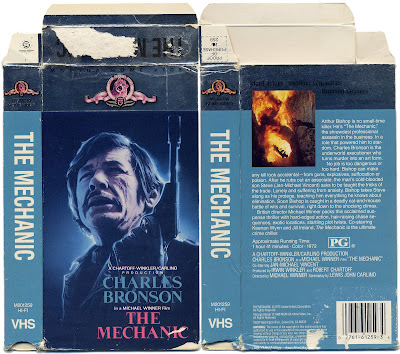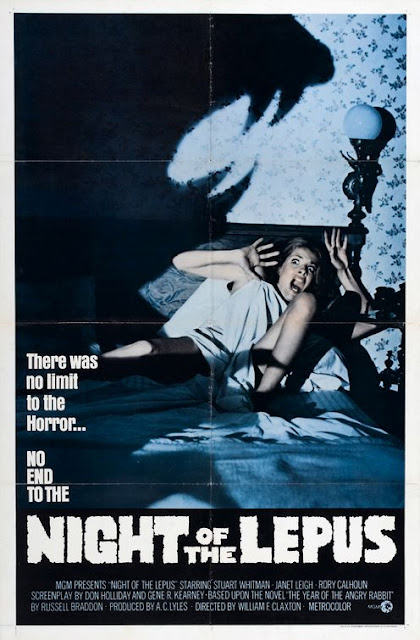UK/Mexico – 1977
Director – Rene Cardona Jr.
Media Home Entertainment, 1983, VHS
Run Time – 1 hour,31 minutes
Tintorera came to my attention because of the Hugo Stiglitz name and the raggedy old Media box in which I spotted it. It quickly became evident that despite more obvious on-screen distractions, there was a lot of subtext in the sex and violence that pervade the film, and I wanted to figure it out. Monsters pretty much always represent more complex issues than their own physical or spiritual presence. Animals as monsters, despite common connections to fears of science, can also embody some socially or personally repressed aberration (or both).
Tintorera: Tiger Shark centers around Steve (Hugo Stiglitz,) an affluent and bored middle aged bachelor vacationing in Mexico and his relationship with Gabriella (Susan George) and Miguel (Andres Garcia). Initially Steve chases women in the bars and beaches, but his interest is ambivalent at best. After an insincere argument with Miguel over one particular woman, he and his rival quickly become friends and begin chasing women together. Soon they meet Gabriella with whom they establish a Menage a Trois with some important rules; no attachment to her, and no other women. Much of Steve and Miguel’s remaining time together is spent interacting with one another while Gabriella, whose character remains largely undeveloped beyond her introductory lines, remains peripheral and safely within the prescribed confines of female sexual object. Her presence serves to superficially deny what is becoming increasingly readable as a journey of sexual discovery between our two brotagonists.
 In the opening scenes while pursuing women, Steve is horrified by a local fisherman’s wanton killing of sharks, but as his relationship with Miguel quickly becomes closer (although never explicitly physical) his friend teaches him how to hunt sharks and he actually begins to enjoy it. Up to this point the violence meted out against sharks is largely implied, but when they start hunting together it is shown quite explicitly, and becomes rather difficult to watch in its gruesomeness. For both the narrative and the film itself, this graphic penetrating violence clearly implies sex between the two men and Steve’s increasing comfort with this new identity. The first time they take Gabriella on one of their hunting forays she is shocked when she witnesses what the men are doing, and as if on cue Miguel is eaten by a Tiger Shark. According to the established rules of the three way, Gabriella takes her leave and Steve is left alone again.
In the opening scenes while pursuing women, Steve is horrified by a local fisherman’s wanton killing of sharks, but as his relationship with Miguel quickly becomes closer (although never explicitly physical) his friend teaches him how to hunt sharks and he actually begins to enjoy it. Up to this point the violence meted out against sharks is largely implied, but when they start hunting together it is shown quite explicitly, and becomes rather difficult to watch in its gruesomeness. For both the narrative and the film itself, this graphic penetrating violence clearly implies sex between the two men and Steve’s increasing comfort with this new identity. The first time they take Gabriella on one of their hunting forays she is shocked when she witnesses what the men are doing, and as if on cue Miguel is eaten by a Tiger Shark. According to the established rules of the three way, Gabriella takes her leave and Steve is left alone again. Until this point, social disapproval and condemnation of his sexuality have pushed Steve into bitterness and even self repression which, with Miguel’s tutelage he has overcome. Through their commission of the transgressive act, the sex as violence, the men kill their feelings of lonely ostracism and guilt. In the final scenes after his lover’s death Steve goes completely apeshit and begins clubbing and spearing every shark he sees in a desperate attempt to find the one that ate Miguel. When he does, he kills it at the cost of his own arm.
Violence committed by men has a long and multicultural filmic tradition as a metaphor for sex, so it is not really a surprise to find it surfacing in a Mexican Jaws knockoff. What is interesting are the connotations of that violence as meted out against sharks in Tintorera, and the fact that contrary to Hollywood’s imperialist tradition, it ends on a positive note with the outsider still outside and unrepentant. Although Miguel’s death truncates the possibility of an continued or overt relationship, and the brilliant white hospital room in which Steve wakes suggests a return to safe institutional normalcy (that is, the hetero-normative), Steve is undeniably and visibly marked by the experience. The look of satisfied serenity on his face leads me to believe that his guilt-demons have been finally exorcised.
This post is part of Queer Film Blogathon hosted by Garbo Laughs
German poster from Grindhouse Database
Japanese art from Super Trash Cinema
"Cult" Classic? I hardly think so.
Three French VHS inserts, all from Agressions Animales




























